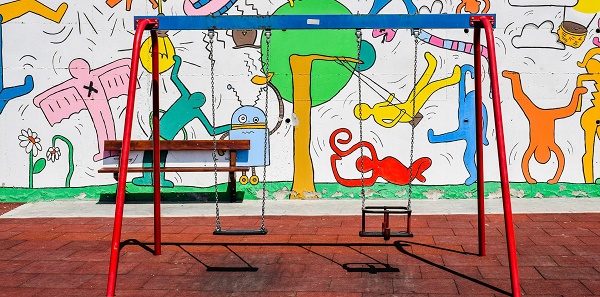Hey, hey, oh playmate,
Come out and play with me
And bring your dollies three
Climb up my apple tree
Slide down my rain barrel
Into my cellar door
And we'll be jolly friend
Forever more, more, more
Come out and play with me
And bring your dollies three
Climb up my apple tree
Slide down my rain barrel
Into my cellar door
And we'll be jolly friend
Forever more, more, more
These are the lines of an old rhyme which hover around my mind when I go down memory lane. I recall my friends and time spent with them in by lanes, on muddy areas, over a roof top……engrossed in activities away from worldly hustle bustles. Sometimes we used to roam around in park here and there always specifying our own play area for the day. Every day there was a new play zone and every place was meant for playing. There was no such buzzword as“designated” play area for kids. With the turn of the century, the need for a specific play area evolved, space meant only for kids structured with their ideas, imagination and inputs.
 |
| Play area design inspired by kid's ideas |
What should be kept in mind while implementing UX in play areas?
Who all should be involved in developing the strategy and design of areas?
What is the role of participants be it parents or concerned authorities or children themselves?
Many studies and researches have been conducted regarding this which envisage the following suggestions:
Who all should be involved in developing the strategy and design of areas?
What is the role of participants be it parents or concerned authorities or children themselves?
Many studies and researches have been conducted regarding this which envisage the following suggestions:
- Delivering good quality play spaces involving parents, grandparents and children in design consultation.
- Attractive design to engage children in their activities.
- Application of health and safety management principles have been the core concern. It is essential that the surface under the playground equipment should be soft and thick enough to lessen the impact of kid's fall.
- The environment for children should be exciting, imaginative and challenging which helps them to innovate, think and learn how to cope with difficult situations.
- Apart from physical fitness, the design should nurture emotional responses and cognitive thinking. This, in turn, ensures improvement in their interpersonal skills, problem-solving skills and language skills.
- The play space should be nature friendly. The use of natural elements like plants, trees and natural rocks add value to the play area.
- Lastly UX testing-evaluation by children and other participants is a must. If there are any bugs these need to be tested and fixed.
- Regular up-gradation and maintenance are must to enhance the longevity of the play area.
Comments
Post a Comment